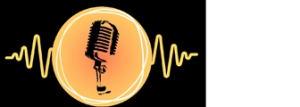Electroclash, a genre of popular music, emerged in the late 1990s and early 2000s, creating a distinctive blend of sounds and styles. Known by various names such as synthcore, retro-electro, tech-pop, nouveau disco, and the new new wave, Electroclash fuses elements from the 1980s electro, new wave, and synth-pop with 1990s techno, retro-style electropop, and electronic dance music. This genre is characterized by its use of vintage synthesizers, electronic beats, and often, provocative, and ironic lyrics.
Definition
Electroclash is not just a music genre; it is an aesthetic movement that combines the sonic elements with visual art, fashion, and performance styles reminiscent of the 1980s and early 1990s. The sound is often marked by minimalist electronic instrumentation, heavy use of synthesizers and drum machines, and a vocal style that ranges from monotone spoken word to melodious singing. The lyrics often embody a sense of nostalgia, camp, and satire, reflecting social and cultural themes of the era it draws inspiration from.
History, Evolution, Cultural Impact and Legacy
- Early Influences: The roots of Electroclash can be traced back to the early works of artists like Kraftwerk, Gary Numan, and Depeche Mode, who pioneered the use of electronic instruments in pop music. However, Electroclash as a distinct genre began to take shape in the late 1990s in New York City, where artists and DJs started blending the retro electronic sound with contemporary techno and house music.
- The Rise of Electroclash: The term “Electroclash” was coined by New York DJ and promoter Larry Tee in the early 2000s to describe the emerging music scene that was influenced by 1980s synth-pop and new wave but had a modern, edgy twist. Clubs in New York, Berlin, and London became hotspots for Electroclash artists and fans, with events like the Electroclash Festival in 2001 helping to solidify the genre’s identity and reach a wider audience.
- Influence and Legacy: While the peak of Electroclash’s popularity was relatively short-lived, its impact on the music industry and pop culture has been lasting. It paved the way for a resurgence of interest in 1980s music and aesthetics and influenced a wide range of artists in various genres. Today, elements of Electroclash can be heard in the works of contemporary artists who blend electronic music with retro influences.
Key Characteristics
Electroclash is marked by its diversity in sound and style, yet there are common elements that define the genre:
- Synthesizers and Drum Machines: The backbone of Electroclash music, these create a sound that is both nostalgic and futuristic.
- Vocal Style: Vocals in Electroclash range from disaffected, monotone delivery to emotive and melodious, often with a theatrical or ironic edge.
- Aesthetic and Themes: The visual aspect of Electroclash is as important as the music, with artists often embracing a DIY, kitschy style that draws from 1980s pop culture, fashion, and technology.
Key Artists and Contributions
Artists like Fischerspooner, Peaches, Ladytron, Miss Kittin and The Hacker, and Felix Da Housecat were at the forefront of the Electroclash movement. Fischerspooner’s track “Emerge” became an anthem of the genre, showcasing the characteristic sound of synthesized melodies and robotic vocals. Peaches’ sexually charged performances and lyrics challenged gender norms and pushed the boundaries of mainstream pop.
Electroclash represents a unique period in the history of popular music, where nostalgia and innovation collided to create a genre that was as much about a look and attitude as it was about the sound. By blending the electronic music of the past with the modern-day techno and pop, Electroclash carved out a niche that continues to influence and inspire artists and musicians around the world.
